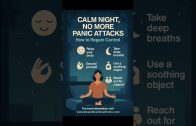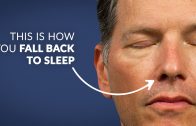Unbelievable Facts about Dreams You didn’t know!
Here are some lesser-known and fascinating facts about dreams:
### 1. **You Can Control Dreams (Lucid Dreaming)**
– **Lucid dreaming** is a state in which the dreamer becomes aware they are dreaming and can often control the storyline or the environment of the dream.
– **Interesting Fact**: Studies suggest that about 55% of people experience lucid dreaming at least once in their lifetime, and some actively practice techniques to have more of these experiences.
### 2. **Dreams Help You Process Emotions**
– **Purpose**: Dreams, particularly during the REM (Rapid Eye Movement) phase of sleep, help the brain process emotional experiences, consolidating them into memory and making them easier to handle.
– **Interesting Fact**: Some researchers believe that nightmares serve a purpose in allowing us to confront fears in a safe environment.
### 3. **You Dream Even if You Don’t Remember**
– **Dream Frequency**: Most people have 3 to 6 dreams per night, occurring during different stages of sleep.
– **Interesting Fact**: You forget 95% of your dreams within a few minutes of waking up, which is why it can be hard to recall them later in the day.
### 4. **Blind People Can Dream**
– People who were born blind do not experience visual dreams, but they dream using other senses, such as smell, touch, taste, and sound.
– **Interesting Fact**: Those who lost their vision after birth can still have visual dreams, but over time, these dreams may feature less visual content.
### 5. **You Can Only Dream About Faces You’ve Seen**
– The human brain cannot “invent” new faces in dreams. Every face you see in a dream is one you’ve seen before, even if it was just a passing glance.
– **Interesting Fact**: The faces of strangers in dreams could be those you’ve seen in crowds or on TV, but your brain remembers and reuses them.
### 6. **Not Everyone Dreams in Color**
– While most people report dreaming in color, about 12% of people claim to dream only in black and white.
– **Interesting Fact**: Research suggests that older generations, especially those who grew up watching black-and-white television, are more likely to experience monochromatic dreams.
### 7. **Animals Dream Too**
– Studies on animals like dogs, cats, and rats show that they exhibit REM sleep, where dreaming is most likely to occur. Their body movements during sleep suggest they are dreaming about activities they perform during the day, such as running or playing.
– **Interesting Fact**: Some birds and mammals, like dolphins, have unique sleep patterns, with one half of their brain staying awake while the other half dreams.
### 8. **Dreams Have Their Own Time Frame**
– Dreams tend to unfold in “real-time,” meaning that the amount of time you experience something in a dream is often the same as it would take in real life.
– **Interesting Fact**: There is a common myth that dreams happen in just an instant, but research with lucid dreamers has shown that events in dreams generally take as long as they would in waking life.
### 9. **Dreams Can Inspire Creativity and Problem-Solving**
– Some of the world’s greatest discoveries and creative ideas came from dreams. For example, the structure of the periodic table, the sewing machine, and even famous musical compositions were inspired by dreams.
– **Interesting Fact**: The term **”sleep on it”** refers to the idea that sleep and dreams can help solve difficult problems or inspire new ideas.
### 10. **Recurring Dreams May Reflect Unresolved Issues**
– **Recurring dreams** often happen when there is an unresolved issue or ongoing concern in your waking life. They tend to repeat the same theme or scenario until the issue is addressed.
– **Interesting Fact**: The most common recurring dream themes include being chased, falling, or showing up late or unprepared for something.
### 11. **Dreams Can Be a Sign of Physical Health**
– Sleep disorders like **sleep apnea** can interrupt dreaming, and a sudden decrease in dream frequency can be an indicator of underlying health issues.
– **Interesting Fact**: Frequent, vivid dreams can be linked to stress, trauma, or medication, suggesting that dream patterns can serve as a reflection of mental and physical health.
### 12. **You’re Paralyzed While Dreaming (Sleep Paralysis)**
– During REM sleep, the body enters a state of temporary paralysis known as **REM atonia**. This prevents you from acting out your dreams.
– **Interesting Fact**: In some cases, people wake up while still paralyzed, experiencing sleep paralysis—a phenomenon where you’re awake but unable to move. It often comes with vivid, sometimes terrifying hallucinations.
Dreams remain one of the most mysterious aspects of the human mind, and science continues to uncover new insights into why we dream and how our dreams connect with our waking life.
#facts #shorts #trending #sleep #dream #humanity #science #psychology #science


























